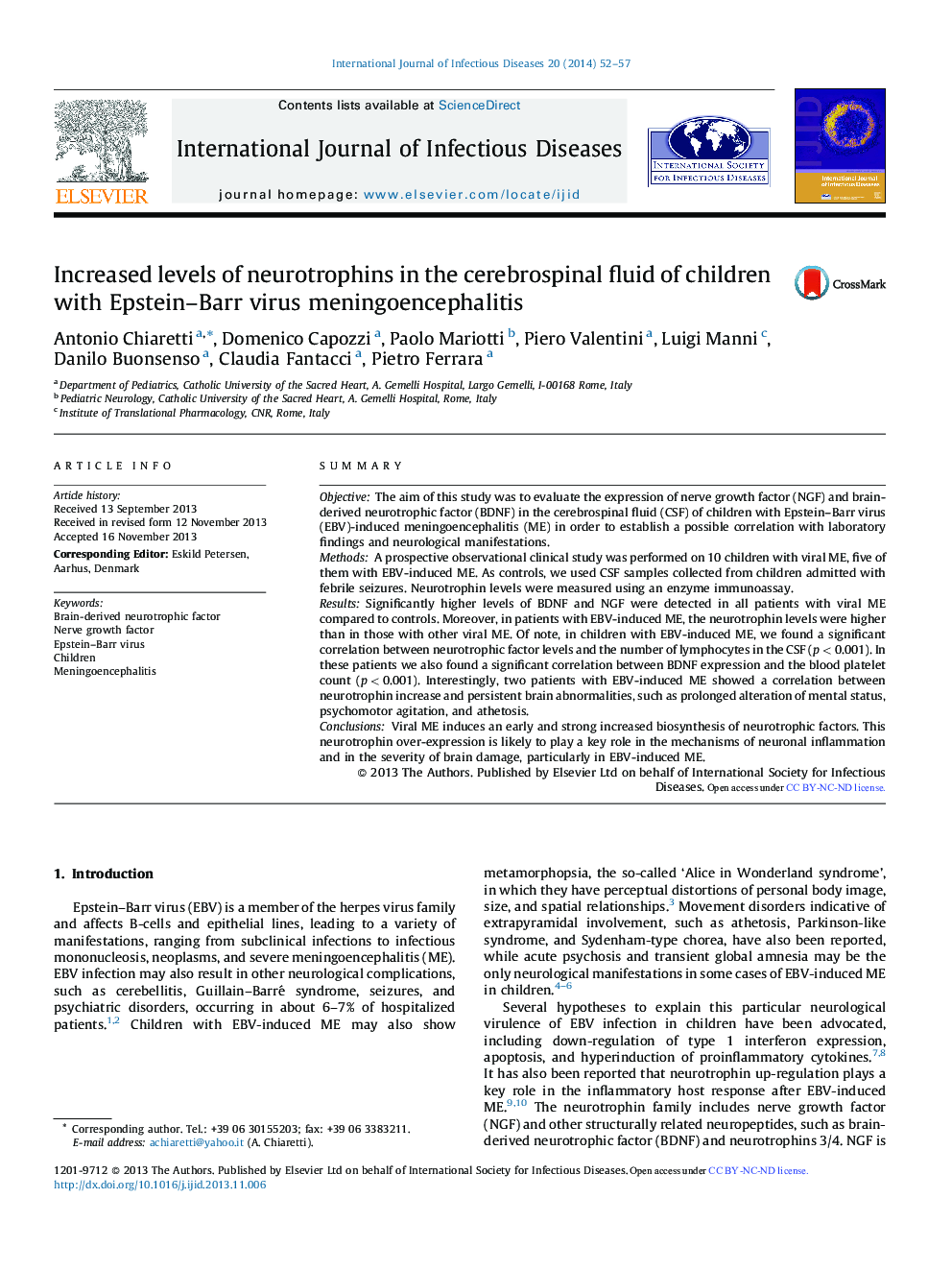| Article ID | Journal | Published Year | Pages | File Type |
|---|---|---|---|---|
| 3362558 | International Journal of Infectious Diseases | 2014 | 6 Pages |
SummaryObjectiveThe aim of this study was to evaluate the expression of nerve growth factor (NGF) and brain-derived neurotrophic factor (BDNF) in the cerebrospinal fluid (CSF) of children with Epstein–Barr virus (EBV)-induced meningoencephalitis (ME) in order to establish a possible correlation with laboratory findings and neurological manifestations.MethodsA prospective observational clinical study was performed on 10 children with viral ME, five of them with EBV-induced ME. As controls, we used CSF samples collected from children admitted with febrile seizures. Neurotrophin levels were measured using an enzyme immunoassay.ResultsSignificantly higher levels of BDNF and NGF were detected in all patients with viral ME compared to controls. Moreover, in patients with EBV-induced ME, the neurotrophin levels were higher than in those with other viral ME. Of note, in children with EBV-induced ME, we found a significant correlation between neurotrophic factor levels and the number of lymphocytes in the CSF (p < 0.001). In these patients we also found a significant correlation between BDNF expression and the blood platelet count (p < 0.001). Interestingly, two patients with EBV-induced ME showed a correlation between neurotrophin increase and persistent brain abnormalities, such as prolonged alteration of mental status, psychomotor agitation, and athetosis.ConclusionsViral ME induces an early and strong increased biosynthesis of neurotrophic factors. This neurotrophin over-expression is likely to play a key role in the mechanisms of neuronal inflammation and in the severity of brain damage, particularly in EBV-induced ME.
